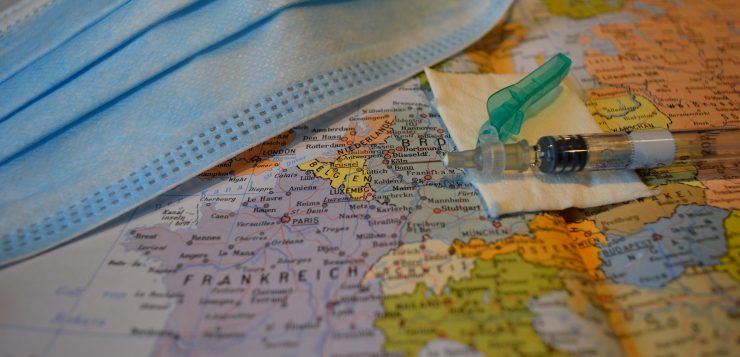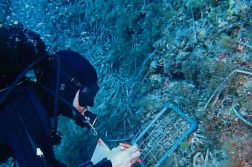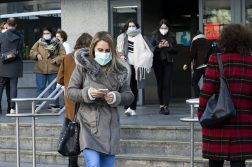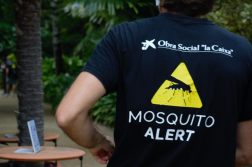The Distancia-Covid Project, in which researchers from various centers of the Spanish National Research Council (CSIC) and the Pompeu Fabra University(UPF) participate, has just published a new report on the results of the third wave of surveys carried out during the month of December 2020 and January 2021.
The report presents the compared data of the anonymous responses received in the first, second and third period, as well as the estimates of the parameters of mobility and social distancing for the Spanish population as a whole.
The first survey was carried out within the alarm state period and in the de-escalation phase, between 14 May and 10 June 2020. The second was completed already outside the alarm period, between July 24 and August 31. And the third, between December 14 and January 10, coinciding with the Christmas holidays. As of January 11, 2021, there were a total of 10127 valid responses, 4402 in the first survey, 2560 in the second, and 3165 in the third.
The age group of contacts is not random
This third report has made it possible to see more clearly how contacts are distributed and structured according to the different age groups. What is observed is that the largest number of contacts is distributed diagonally (see image 1), which means that people in one age group tend to have contact with people in the same age group. .
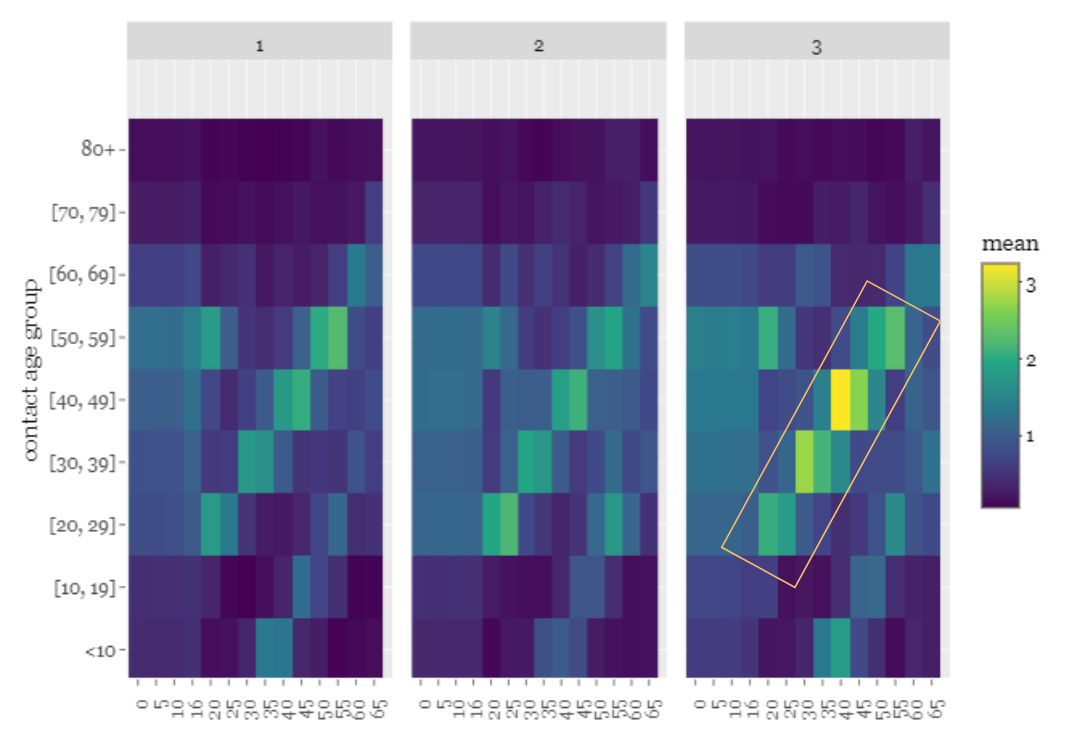
In the daily contacts by age groups, some family structures can also be distinguished, such as a greater number of contacts between the age groups of 20-25 and 50-59 years (children with parents).
As for the probability of contacts or encounters away from home from previous surveys show that these were lower during the first state of alarm, presenting some territorial variability, increased and homogenized after falling, and decreased again -se during the winter period (third survey) although if greater variability was observed, perhaps because of the Christmas holidays.
The analysis of the data has allowed us to rule out that the age factor clearly influences the observed variability in terms of probability of contacts, but we continue to work to determine other factors with which it may be related (employment status, type of work …).
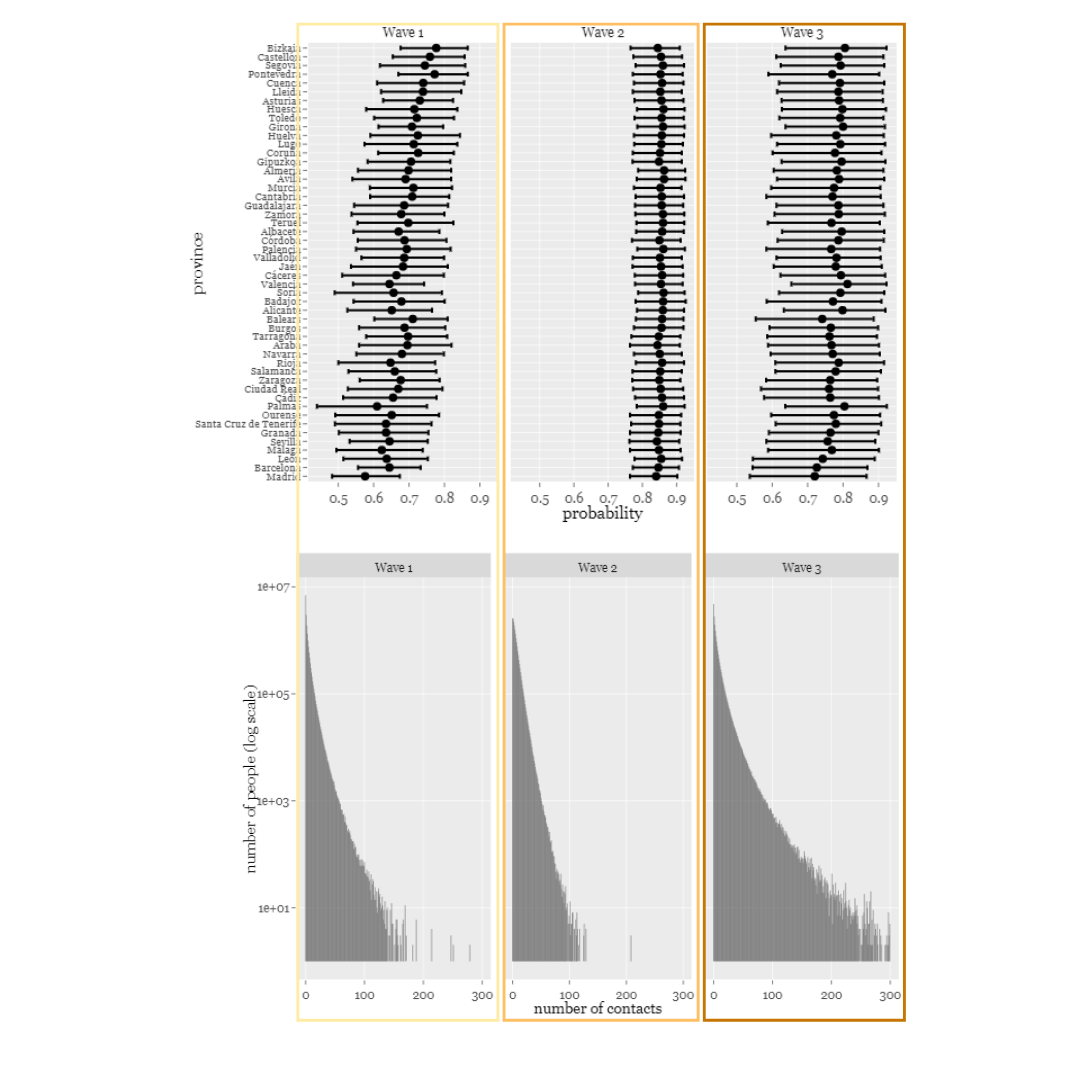
The data of contacts between people extracted from the surveys, together with the data of public mobility of Apple and the open data of the Department of Health of the Generalitat de Catalunya , to adjust and feed a mathematical model that shows predictions to half term of the SARS-CoV-2 pandemic (Covid-19) in the autonomous region of Catalonia (Spain).
The adjustment of the model is done for a period of one month, and is readjusted every fortnight. In addition, the mobility and PCR data performed are updated daily, as the former directly influence the dynamics of the disease through infection and the latter in the detection of the disease, and therefore, indirectly, also in its dynamics. The model can be consulted on the project website.
Trips of more than 10 km away are predominant
The study shows that during the state of alarm most of the movements of the respondents away from home did not exceed 10 kilometers away. In fact, 40% of respondents reported that their daily commutes did not go beyond a 1km radius of action around their home.
The most frequent destination was shops, followed by public spaces and workplaces. In contrast, in both the second and third survey results, trips over 10 km soared as did the number of weekly outings.
We begin the fourth phase of surveys
The information is to go back to complete a fourth survey to achieve social behavior during the fifth wave of the pandemic. Enquesta is able to participate anonymously through the project’s website: https://distancia-covid.csic.es/encuesta/
The results will help to understand the greater dynamics of contagion observed during the different phases of the pandemic in Spain and will contribute to propose scenarios of better utility to manage the crisis generated by Covid-19.
Participating in the project is the Institute of Interdisciplinary Physics and Complex Systems (IFISC), a joint center of the CSIC and the University of the Balearic Islands; the Center for Advanced Studies of Blanes (CEAB-CSIC), the Institute of Physics of Cantabria (IFCA-CSIC), the Pompeu Fabra University (UPF) and the Institute of Economics, Geography and Demography (IEGD-CSIC). José Javier Ramasco, from IFISC, and Frederic Bartumeus, from CEAB-CSIC and CREAF coordinate the project.


